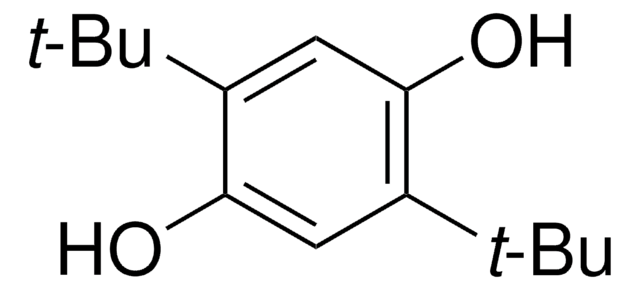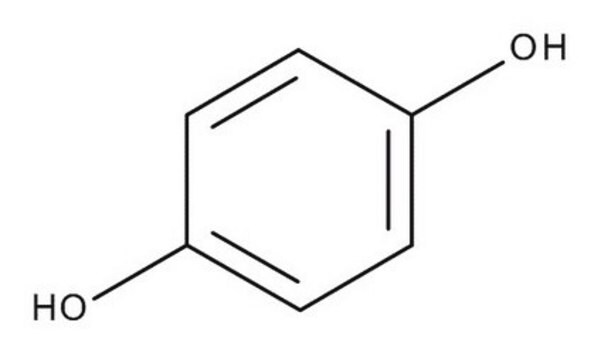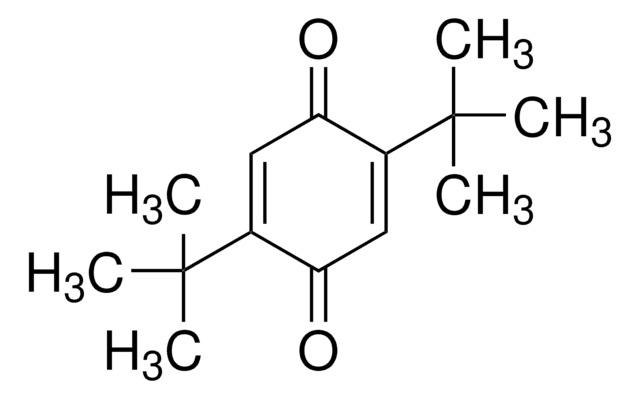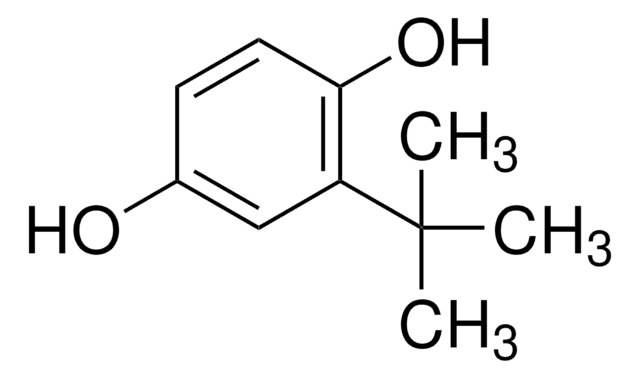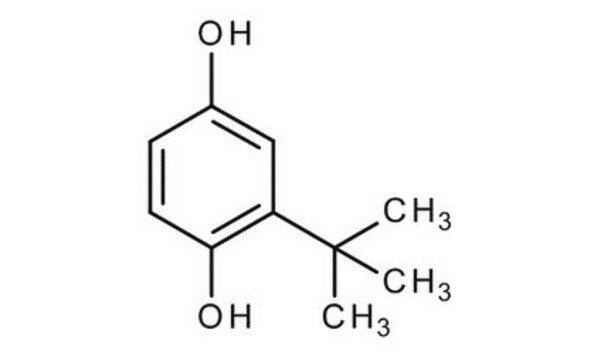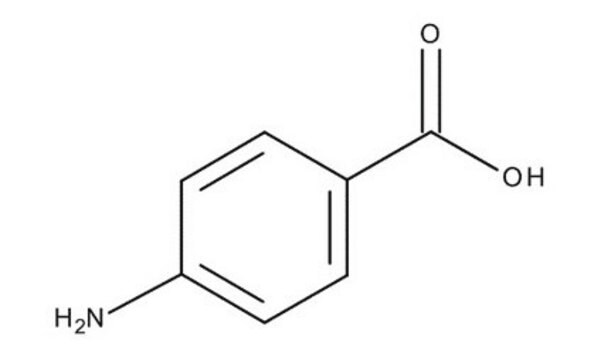8.21762
2,5-Di-tert-butylhydroquinone
for synthesis
Synonym(e):
2,5-Di-tert-butylhydroquinone
About This Item
Empfohlene Produkte
Qualitätsniveau
Assay
≥98.0% (HPLC)
Form
powder
Selbstzündungstemp.
420 °C
mp (Schmelzpunkt)
212-218 °C
Lagertemp.
2-30°C
InChI
1S/C14H22O2/c1-13(2,3)9-7-12(16)10(8-11(9)15)14(4,5)6/h7-8,15-16H,1-6H3
InChIKey
JZODKRWQWUWGCD-UHFFFAOYSA-N
Anwendung
- Food Contact Material Study: Investigated the occurrence and application areas of 2,5-di-tert-butylhydroquinone in food contact materials, highlighting its use and safety implications (Pedersen & Cederberg, 2014).
- Antibacterial and Anti-Biofilm Properties: Explored the potential use of DBHQ as an antibacterial and anti-biofilm agent against Staphylococcus aureus, suggesting new applications in medical and healthcare fields (Kim et al., 2022).
- Cognitive Performance and Metabolomics: Investigated serum and CSF metabolites, including DBHQ, in stroke-free patients, offering insights into vascular risk factors and cognitive performance, relevant for neurological drug development (Peng et al., 2020).
- Cellular Mechanism Study: Assessed the role of DBHQ in Ca2+ handling in cellular models, which could be critical for understanding cellular mechanisms in drug discovery and development (Liu et al., 2015).
- Review on Food Additives: A narrative review highlighting the excessive use of DBHQ in food products and its potential health impacts, emphasizing the need for accurate monitoring and regulatory review (Khezerlou et al., 2022).
Hinweis zur Analyse
Schmelzbereich (unterer Wert): ≥ 212 °C
Schmelzbereich (oberer Wert): ≤ 218 °C
Identität (IR): entspricht
Signalwort
Danger
H-Sätze
Gefahreneinstufungen
Acute Tox. 3 Oral - Aquatic Acute 1 - Aquatic Chronic 1 - Skin Sens. 1 - STOT SE 3
Zielorgane
Respiratory system
Lagerklassenschlüssel
6.1C - Combustible, acute toxic Cat.3 / toxic compounds or compounds which causing chronic effects
WGK
WGK 3
Flammpunkt (°F)
Not applicable
Flammpunkt (°C)
Not applicable
Analysenzertifikate (COA)
Suchen Sie nach Analysenzertifikate (COA), indem Sie die Lot-/Chargennummer des Produkts eingeben. Lot- und Chargennummern sind auf dem Produktetikett hinter den Wörtern ‘Lot’ oder ‘Batch’ (Lot oder Charge) zu finden.
Besitzen Sie dieses Produkt bereits?
In der Dokumentenbibliothek finden Sie die Dokumentation zu den Produkten, die Sie kürzlich erworben haben.
Unser Team von Wissenschaftlern verfügt über Erfahrung in allen Forschungsbereichen einschließlich Life Science, Materialwissenschaften, chemischer Synthese, Chromatographie, Analytik und vielen mehr..
Setzen Sie sich mit dem technischen Dienst in Verbindung.